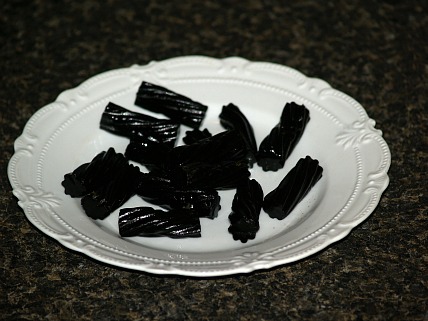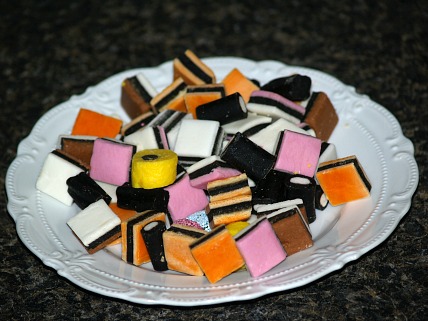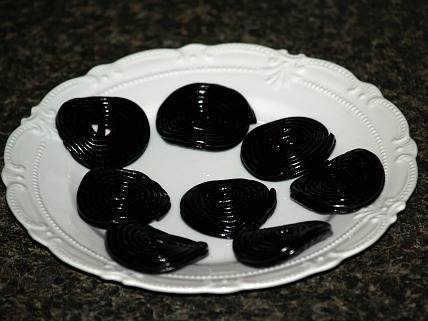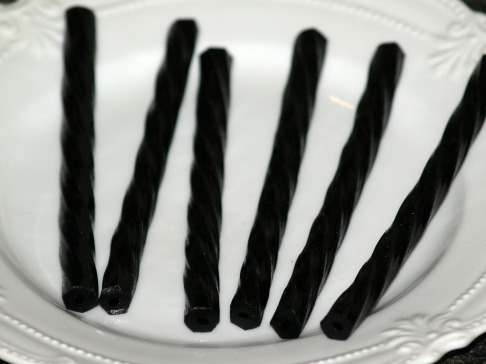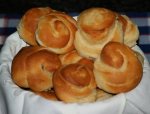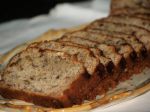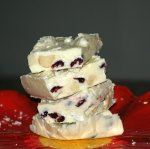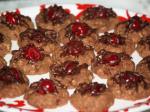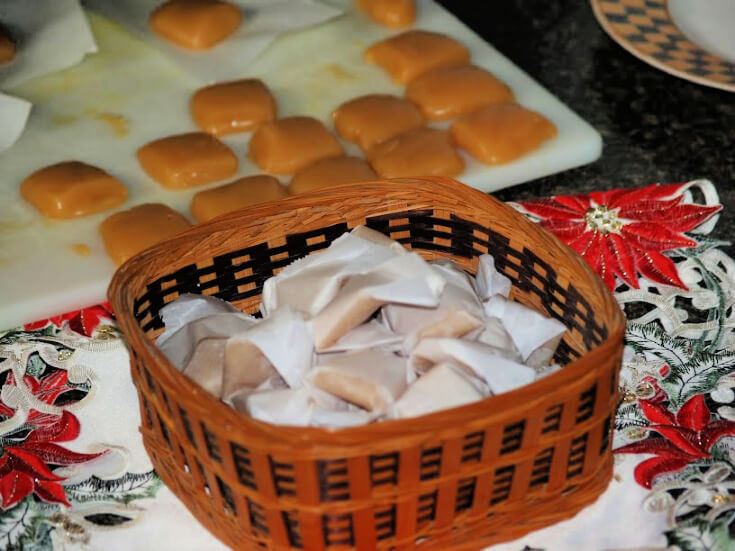- Painless Cooking
- Spices
- Licorice
What is Licorice?
What is Licorice? What person does not remember as a child chewing on those long strips of “rubbery” licorice candy sticks? How great it was when I could talk Mom into one of those (I think they were a penny) sweet black candies. Occasionally, we might get small pieces of licorice candy; always black in color.
The licorice plant is native to parts of Asia and Southern Europe. It has a sweet flavor which lingers in the mouth long after it is gone. This sweetness is extracted to use in cooking and for medicinal purposes. Although it is not related, the taste resembles anise or star anise. To make the extract, the roots are boiled to bring out the flavor and then the water is mostly evaporated. In many licorice candy recipes the flavor is strengthened by also blending in some anise oil.
What is Licorice and What are the Health Benefits?
There are countries that use licorice for treatment of viral hepatitis, Tuberculosis and stomach problems. Here in the US, limited studies have been done showing licorice might be helpful in treating some problems and is a good source of iron. Because it aids in suppressing muscle spasms, it can be used to treat irritable bowel syndrome, leaky gut syndrome and Crones disease.
What is Licorice and What Part it Played in My Life?
The extracted thick black paste is often used as an expectorant for coughs and colds. I never was one to have many sicknesses; even a simple cough has always been uncommon for me. As a child I use to long to get a cold (sometimes I would pretend) so Dad would buy me a box of Smith Brothers black licorice cough drops.
It was a different world back then! We did not have much candy and these cough drops were like candy to me; they were so good. Dad would tell me to hold one in my mouth and let it gradually melt so it would sooth my throat. I just couldn’t resist chewing one after the other like candy.
Dad worked at the paper mill back then. We lived in the country and he would walk back and forth to work (People were rich if they had one car and having two was unheard of). Anyway, Dad had to walk past the corner drug store on his way to work; this is where you had to purchase these cough drops back then. I think you can see how rare it was for me to get one of these little boxes of delicacies and why I would pretend to be sick.
BELOW LICORICE WHEEL CANDY
What is Licorice and Caution to be Noted?
There have been found some side effects possible from eating this deliciously sweet herb. The root of this herb contains a substance called glycyrrhizin; a chemical which gives licorice the sweet flavor. This has been shown to cause high blood pressure and low potassium levels which are related to heart problems. Glycyrrhizin may also interact with many prescription drugs.
Noting this caution, if you have no major medical problems like diabetes, high blood pressure, kidney or heart problems, there should be no problem with eating a little licorice. American licorice or deglycyrrhizin licorice does not contain as much glycyrrhizin as the licorice produced in other countries.
What is Licorice? Here in the United States and in the Netherlands, like many I use licorice mostly in candy making. Some cooks in Spanish countries pride themselves in their licorice cakes. Salted licorice roots are sold in Denmark at the drug stores. Licorice is used in many soup and stew recipes throughout Asia and Europe. Besides all these and my favorite “Smith Brothers” black licorice cough drops, it is used in tobacco. Over ninety percent of the licorice produced is used in the production of tobacco. No wonder tobacco is addictive!
LICORICE OR ANISE CANDY
- 1 Cup granulated sugar
- ¼ Cup brown sugar
- ¼ Cup water
- ¼ Cup light corn syrup
- 1 Tablespoon black food coloring
- ¼ Teaspoon anise or licorice extract
Combine sugars, water and corn syrup in a sauce pan.
Cook and stir over medium heat until boiling; wash down sides of pan.
Place thermometer in pan and continue to cook WITHOUT stirring.
Cook until thermometer reaches 290F degrees.
Remove pan from heat; add flavoring and color and stir gently to blend.
Drop teaspoonfuls onto lightly buttered baking sheets.
NOTE: If candy gets too firm before dropping is finished reheat slightly to soften.
Cool in cool place but not in refrigerator; wrap individually in wax paper to keep.
